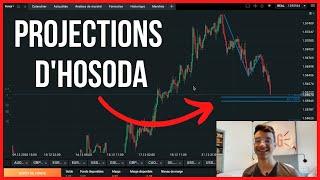Please find the link to the Management Consulting Program that I personally lead at Blue Chapter! You receive personal feedback every week & work on an international live strategy project. This is not a mock project & our students proudly speak about this live experience in their interviews:)
https://bluechapter.com/consulting-experience-program-gen/
If you are applying for fall 2023/2024 MBA programs, check out the global MBA fellowship program:
https://bluechapter.com/global-mba-fellow/
****
Follow me here
LinkediIn - https://www.linkedin.com/in/pavan-sathiraju/
Instagram - https://www.instagram.com/pavan.sathiraju
****
Amazon has a market cap of over $1 trillion USD. It is more than the GDP of many countries like Singapore, Turkey, Netherlands, and so on. To run this empire Amazon employs over 1.6 Million people. 1.3 Mn people work in the warehouse and delivery units. Additional 3 lakh employees work in the corporate offices In 2017 when Amazon announced it was opening its second office in North America, 200 cities were bidding for Amazon to open their office in their city. When Amazon announced the layoff of 18,000 employees at the start of this year, and additional 1000 layoffs in March 2023.
Amazon layoffs were a shocker for everybody. Amazon is one of the largest employers in the world. So much so that when Amazon plans opening an office in some place, mayors and local leaders bid for Amazon to open its office in their state/city.
The rationale for Jan 2023 layoffs was to lay off employees for sectors like Amazon warehouse which were not bringing in any profits. In this video, I explained how Amazon runs Ads and why Amazon is laying off employees from its most productive units as well. We will also look into what is happening in the AWS and Advertisement segments in general. If you search anything of Amazon, you get sponsored results on the top.
These are brands paying Amazon to sponsor their products in search results. Once after clicking on these ads, you will see some display ads on the product page as well. And some video ads too. In this way, Amazon is running 4 different types of ads at once. If I go and search for shoes on Amazon that are priced at ₹1000. Now companies like Puma, Nike, and Adidas want to show their Ads to me. The question is how much should a company spend on Ads. American Small and Medium Business Administration says that a large company typically spends 6-12% of its gross revenue on Ads while a small company spends up to 12% to 20% of its gross revenue on Ads and marketing.
Now let’s assume that if the gross margin is 1000 then these big companies would be willing to spend up to ₹120 (12% of the revenue) on marketing. But nobody purchases the product after seeing the first Ad itself. The way these companies split the advertisement cost is between multiple platforms. The conversion rate once a customer clicks an Ad on Amazon is 10%. In this scenario, the Advertisers will split their Ad spend to gain 10 customers so at least one of them converts. So, 120 divided by 10 which is ₹12 will be the cost per click. This is the cost that every advertiser is willing to bear to get one click on Amazon.
This CPC is the basis for all online marketing. After this online algorithm-based bidding takes place where all the players will bid ₹11, then ₹11.5 until they reach the max amount of money they can spend per click. Thus Amazon will want these companies to bid as high as possible to get these clicks. The problem is that the revenues of these organizations is going down across the board. On average S&P 500 Company has lost 3.9% of its earnings in the last quarter. These companies now have less money to spend on marketing.
Secondly, because of inflation, the purchasing power of the customer is decreasing. So because of these, the overall spending is going down and the CPC bid is going down. The price of products is also going down because of the Inflation control measures of the government. In the last 10 years, Google and Facebook were the platforms selling advertisements but their conversion rates were 1-2%. Which is way lower than Amazon’s 10% conversion rate.
Now Amazon is facing a similar threat from newer companies like TikTok. Also, YT Shorts, TikTok, and Reels are the latest form of content that is being consumed. Besides, all these companies are trying to provide the best value to advertisers. This means more competition for Amazon, Facebook, and Google.
In the end, I’ve enumerated the learnings and takeaways we can draw from the present scenario. Please feel free to suggest to me which other topics you’d like me to cover in the upcoming videos.
*****
Chapters
0:00 - Intro
1:20 - Amazon Layoffs 2023
1:58 - Jan 2023 Layoffs
2:34 - Pointers
2:50 - How Amazon runs advertisements
3:43 - How Advertisers pay Amazon
6:03 - Decreasing Revenues
6:32 - Inflation
6:50 - Increased Competition
8:20 - Summary
8:39 - Takeaways
10:43 - Outro
https://bluechapter.com/consulting-experience-program-gen/
If you are applying for fall 2023/2024 MBA programs, check out the global MBA fellowship program:
https://bluechapter.com/global-mba-fellow/
****
Follow me here
LinkediIn - https://www.linkedin.com/in/pavan-sathiraju/
Instagram - https://www.instagram.com/pavan.sathiraju
****
Amazon has a market cap of over $1 trillion USD. It is more than the GDP of many countries like Singapore, Turkey, Netherlands, and so on. To run this empire Amazon employs over 1.6 Million people. 1.3 Mn people work in the warehouse and delivery units. Additional 3 lakh employees work in the corporate offices In 2017 when Amazon announced it was opening its second office in North America, 200 cities were bidding for Amazon to open their office in their city. When Amazon announced the layoff of 18,000 employees at the start of this year, and additional 1000 layoffs in March 2023.
Amazon layoffs were a shocker for everybody. Amazon is one of the largest employers in the world. So much so that when Amazon plans opening an office in some place, mayors and local leaders bid for Amazon to open its office in their state/city.
The rationale for Jan 2023 layoffs was to lay off employees for sectors like Amazon warehouse which were not bringing in any profits. In this video, I explained how Amazon runs Ads and why Amazon is laying off employees from its most productive units as well. We will also look into what is happening in the AWS and Advertisement segments in general. If you search anything of Amazon, you get sponsored results on the top.
These are brands paying Amazon to sponsor their products in search results. Once after clicking on these ads, you will see some display ads on the product page as well. And some video ads too. In this way, Amazon is running 4 different types of ads at once. If I go and search for shoes on Amazon that are priced at ₹1000. Now companies like Puma, Nike, and Adidas want to show their Ads to me. The question is how much should a company spend on Ads. American Small and Medium Business Administration says that a large company typically spends 6-12% of its gross revenue on Ads while a small company spends up to 12% to 20% of its gross revenue on Ads and marketing.
Now let’s assume that if the gross margin is 1000 then these big companies would be willing to spend up to ₹120 (12% of the revenue) on marketing. But nobody purchases the product after seeing the first Ad itself. The way these companies split the advertisement cost is between multiple platforms. The conversion rate once a customer clicks an Ad on Amazon is 10%. In this scenario, the Advertisers will split their Ad spend to gain 10 customers so at least one of them converts. So, 120 divided by 10 which is ₹12 will be the cost per click. This is the cost that every advertiser is willing to bear to get one click on Amazon.
This CPC is the basis for all online marketing. After this online algorithm-based bidding takes place where all the players will bid ₹11, then ₹11.5 until they reach the max amount of money they can spend per click. Thus Amazon will want these companies to bid as high as possible to get these clicks. The problem is that the revenues of these organizations is going down across the board. On average S&P 500 Company has lost 3.9% of its earnings in the last quarter. These companies now have less money to spend on marketing.
Secondly, because of inflation, the purchasing power of the customer is decreasing. So because of these, the overall spending is going down and the CPC bid is going down. The price of products is also going down because of the Inflation control measures of the government. In the last 10 years, Google and Facebook were the platforms selling advertisements but their conversion rates were 1-2%. Which is way lower than Amazon’s 10% conversion rate.
Now Amazon is facing a similar threat from newer companies like TikTok. Also, YT Shorts, TikTok, and Reels are the latest form of content that is being consumed. Besides, all these companies are trying to provide the best value to advertisers. This means more competition for Amazon, Facebook, and Google.
In the end, I’ve enumerated the learnings and takeaways we can draw from the present scenario. Please feel free to suggest to me which other topics you’d like me to cover in the upcoming videos.
*****
Chapters
0:00 - Intro
1:20 - Amazon Layoffs 2023
1:58 - Jan 2023 Layoffs
2:34 - Pointers
2:50 - How Amazon runs advertisements
3:43 - How Advertisers pay Amazon
6:03 - Decreasing Revenues
6:32 - Inflation
6:50 - Increased Competition
8:20 - Summary
8:39 - Takeaways
10:43 - Outro
- Catégories
- E commerce Amazon
- Mots-clés
- pavan sathiraju, pavan sathiraju insead, pavan sathiraju management consulting















Commentaires